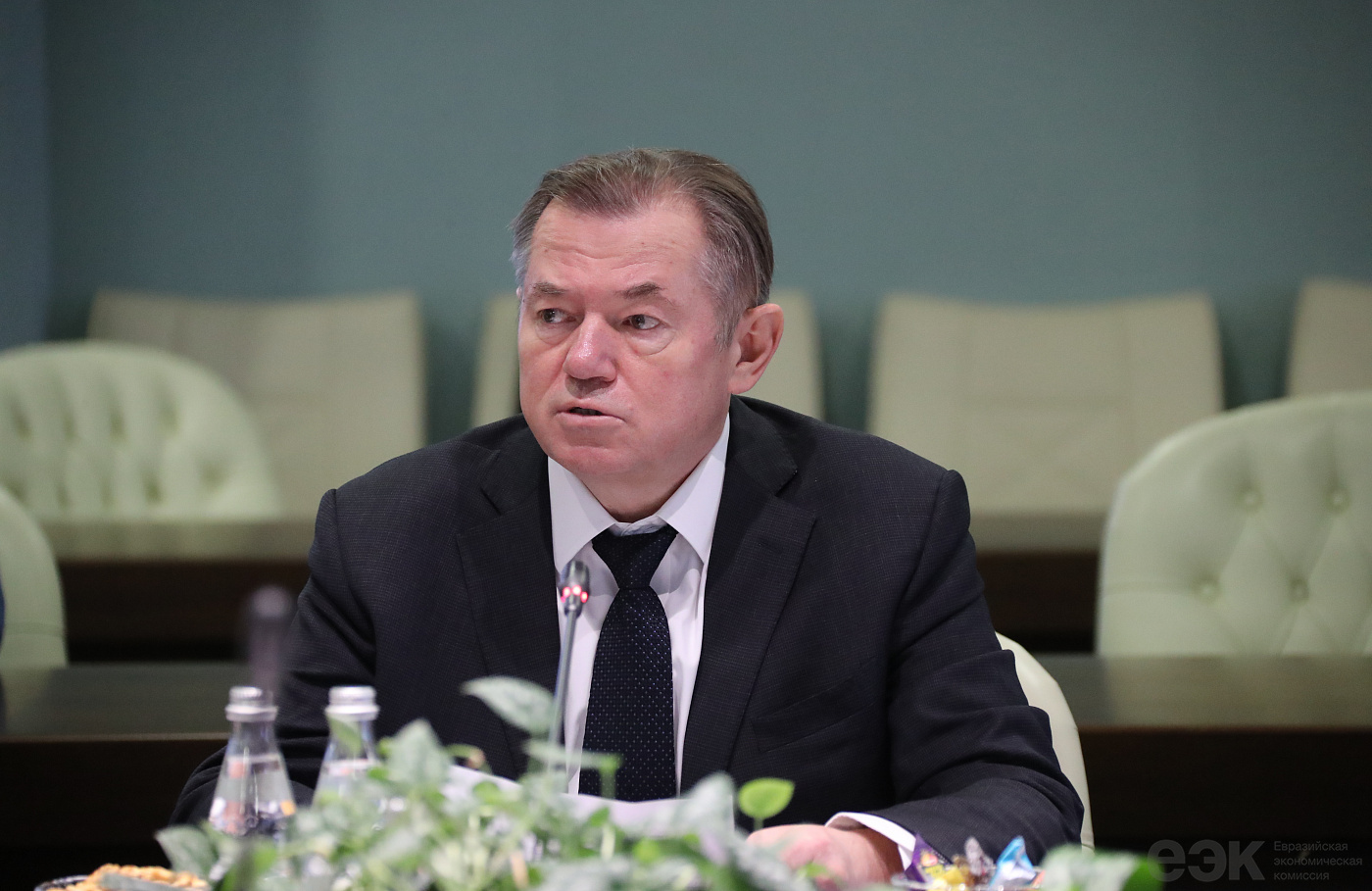News
22.04.2022
Belarus and Russia proposed schemes to form EAEU common exchange market for goods
Possible schemes to form the Eurasian Economic Union’s common exchange
market for goods were discussed by participants of the Working Group on forming
a common exchange market for goods at a meeting held at the Eurasian Economic
Commission’s headquarters.
As Sergei Glazyev, EEC Minister in charge of Integration and Macroeconomics, has stressed, the relevance of this work increased significantly given the geopolitical background. By July of this year, the Commission should submit a report with proposals, a list of goods to be sold at stock trading, derivative financial instruments, as well as exchange and non-exchange price indicators.
Belarus proposed to form a common market based on existing stock exchanges; at the first stage - to trade with national participants in exchange trade, and at the second stage - to send unfilled applications of national stock exchanges to a specially created International Data Processing Center for further search for counter offers and transaction processing. The advantage of this approach is the guaranteed fulfillment of domestic demands as well as interests of national participants.
Russia proposed to trade in all national stock exchanges by admitting representatives of all Union countries to trading. According to the Russian side, this will create competition between national commodity exchanges and will spur their development.
Following the discussion, the sides agreed to include both approaches in the report.
Furthermore, the sides discussed the list of goods offered for trading in the Union’s common exchange market. At the first stage, such goods as coal, mineral fertilizers, vegetable oil, sugar, cakes, oil cakes, wood, metal, building materials, cement and gold can be traded. At the second stage, the list can be supplemented with such goods as electric power, gas, oil, petroleum products and grain after agreeing on the trading rules, as well as lifting restrictive measures or export and import bans within mutual trade.
As Askar Japparkulov, Director of the EEC Macroeconomic Policy Department has noted, in May-June it is scheduled to hold test trading at the Eurasian Trading System Commodity Exchange (Kazakhstan) and the St. Petersburg International Commodity Exchange (Russia) involving the Union States’ representatives
Information Support Section of the EEC Organizational Support and Protocol Department
As Sergei Glazyev, EEC Minister in charge of Integration and Macroeconomics, has stressed, the relevance of this work increased significantly given the geopolitical background. By July of this year, the Commission should submit a report with proposals, a list of goods to be sold at stock trading, derivative financial instruments, as well as exchange and non-exchange price indicators.
"In terms of pricing processes and currency infrastructure, we are over a barrel on Western systems. Today we should not only think about forming the exchange space, but also create our own pricing system in national currencies", Sergei Glazyev noted.Belarus and Russia presented their proposals on the scheme of the exchange market for goods.
Belarus proposed to form a common market based on existing stock exchanges; at the first stage - to trade with national participants in exchange trade, and at the second stage - to send unfilled applications of national stock exchanges to a specially created International Data Processing Center for further search for counter offers and transaction processing. The advantage of this approach is the guaranteed fulfillment of domestic demands as well as interests of national participants.
Russia proposed to trade in all national stock exchanges by admitting representatives of all Union countries to trading. According to the Russian side, this will create competition between national commodity exchanges and will spur their development.
Following the discussion, the sides agreed to include both approaches in the report.
Furthermore, the sides discussed the list of goods offered for trading in the Union’s common exchange market. At the first stage, such goods as coal, mineral fertilizers, vegetable oil, sugar, cakes, oil cakes, wood, metal, building materials, cement and gold can be traded. At the second stage, the list can be supplemented with such goods as electric power, gas, oil, petroleum products and grain after agreeing on the trading rules, as well as lifting restrictive measures or export and import bans within mutual trade.
As Askar Japparkulov, Director of the EEC Macroeconomic Policy Department has noted, in May-June it is scheduled to hold test trading at the Eurasian Trading System Commodity Exchange (Kazakhstan) and the St. Petersburg International Commodity Exchange (Russia) involving the Union States’ representatives
"Test trading will enable modeling and perfecting the trade terms within the EAEU common exchange market for goods. The trading summaries will be included in the report as well", Askar Japparkulov reported.
For reference
The Working Group on forming a common exchange market for goods within the EAEU was established in April 2021. It included representatives of the Union countries’ authorized bodies, stock exchanges and the Member States’ manufacturers of exchange goods, as well as the Commission’s representatives.
Forming the Union’s common exchange market for goods is provided for by the Strategy-2025. The program for developing the exchange trading in goods is scheduled to be approved until December 31, 2024.
The Working Group on forming a common exchange market for goods within the EAEU was established in April 2021. It included representatives of the Union countries’ authorized bodies, stock exchanges and the Member States’ manufacturers of exchange goods, as well as the Commission’s representatives.
Forming the Union’s common exchange market for goods is provided for by the Strategy-2025. The program for developing the exchange trading in goods is scheduled to be approved until December 31, 2024.






